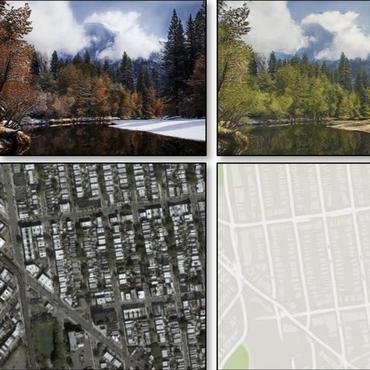DGFont++: Robust Deformable Generative Networks for Unsupervised Font Generation
Automatic font generation without human experts is a practical and significant problem, especially for some languages that consist of a large number of characters. Existing methods for font generation are often in supervised learning. They require a large number of paired data, which are labor-intensive and expensive to collect. In contrast, common unsupervised image-to-image translation methods are not applicable to font generation, as they often define style as the set of textures and colors. In this work, we propose a robust deformable generative network for unsupervised font generation (abbreviated as DGFont++). We introduce a feature deformation skip connection (FDSC) to learn local patterns and geometric transformations between fonts. The FDSC predicts pairs of displacement maps and employs the predicted maps to apply deformable convolution to the low-level content feature maps. The outputs of FDSC are fed into a mixer to generate final results. Moreover, we introduce contrastive self-supervised learning to learn a robust style representation for fonts by understanding the similarity and dissimilarities of fonts. To distinguish different styles, we train our model with a multi-task discriminator, which ensures that each style can be discriminated independently. In addition to adversarial loss, another two reconstruction losses are adopted to constrain the domain-invariant characteristics between generated images and content images. Taking advantage of FDSC and the adopted loss functions, our model is able to maintain spatial information and generates high-quality character images in an unsupervised manner. Experiments demonstrate that our model is able to generate character images of higher quality than state-of-the-art methods.
PDF Abstract




